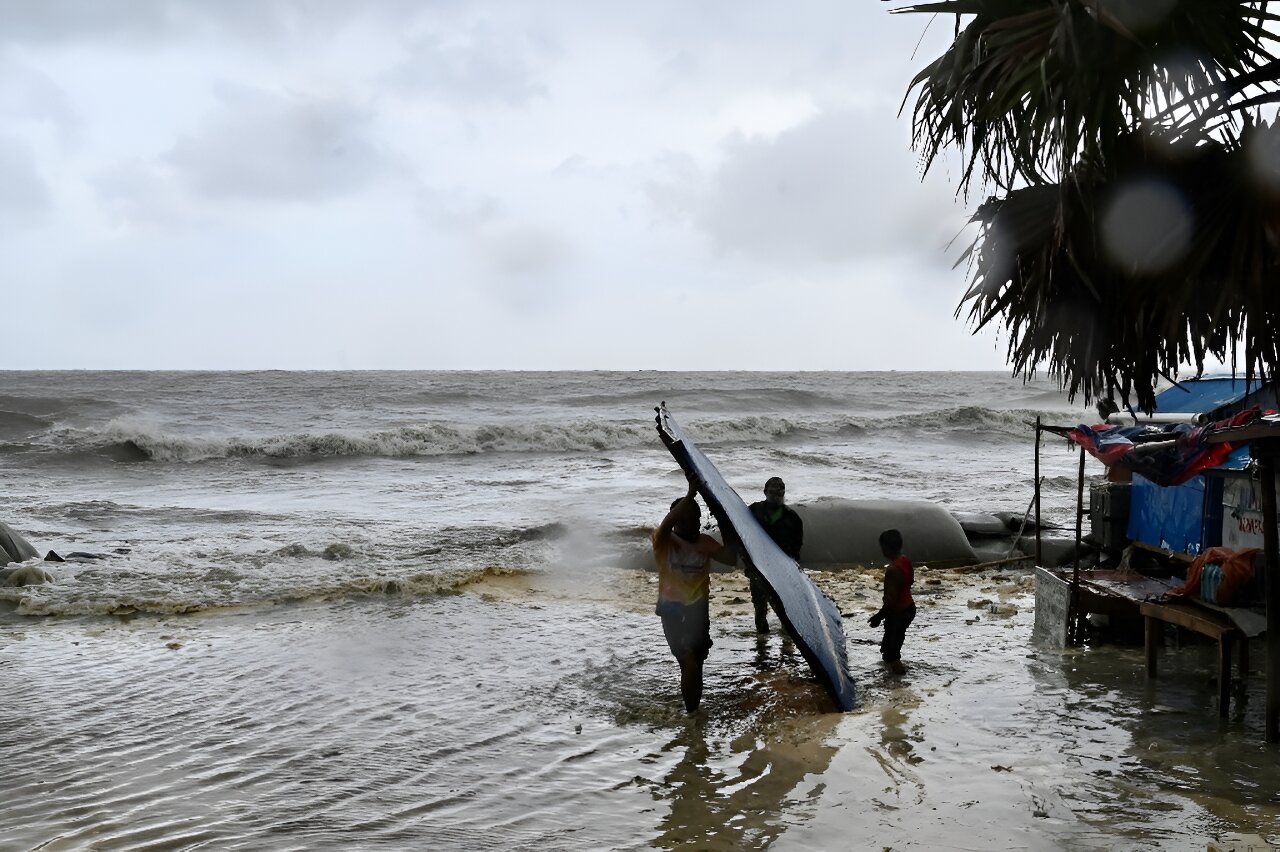11 Dec 2024

Tired Earth
By The Editorial Board

Tens of thousands of Bangladeshis left their coastal villages Sunday for concrete storm shelters further inland as the low-lying nation prepared for the expected landfall of an intense cyclone, officials said.
Cyclone Remal is set to hit the southern coast and parts of neighboring India on Sunday evening, with Bangladesh's weather department predicting crashing waves and howling gales with gusts of up to 130 kilometers (81 miles) per hour.
Cyclones have killed hundreds of thousands of people in Bangladesh in recent decades, but the number of superstorms hitting its low-lying, densely populated coast have increased sharply—from one a year to as many as three—due to the impact of climate change.
"The cyclone could unleash a storm surge of up to 12 feet (four meters) above normal astronomical tide, which can be dangerous," senior weather official Muhammad Abul Kalam Mallik told AFP.
Most of Bangladesh's coastal areas are a meter or two above sea level and high storm surges can devastate villages.
Authorities have raised the danger signal to its highest level, warning fishermen against going to the sea and triggering an evacuation order for those in at-risk areas.
Ferry sinks
As people fled, police said that a heavily laden ferry carrying more than 50 passengers—double its capacity—was swamped by rough waters and sank near Mongla, a port in the expected path of the storm.
"At least 13 people were injured and were taken to a hospital," local police chief Mushfiqur Rahman Tushar told AFP, adding that other boats plucked the passengers to safety.

"Our plan is to evacuate hundreds of thousands of people from unsafe and vulnerable homes to the cyclone shelters," the government's disaster management secretary Kamrul Hasan told AFP.
The authorities have mobilized tens of thousands of volunteers to alert people to the danger.
He said some 4,000 cyclone shelters have been readied along the country's lengthy coast on the Bay of Bengal, with the cyclone expected to hit a 220-kilometer stretch from India's Sagar Island to Khepupara in Bangladesh.
The state-run Bangladesh Meteorological Department said Cyclone Remal would make landfall Sunday between 6:00 pm and midnight (1200-1800 GMT).
'Vulnerable'
In addition to the villagers and fishermen, many of the multi-story centers have space to shelter their cattle, buffaloes and goats, as well as their pets.
"Some 78,000 volunteers have been mobilized to alert coastal people and evacuate the vulnerable people," Hasan said.
Helal Mahmud Sharif, the chief government administrator of Khulna province, told AFP some 20,000 people had been evacuated to shelters in the most vulnerable coastal regions.
Another 15,000 people and about 400 domesticated animals have been evacuated in the coastal Patuakhali and Bhola districts.

On the low-lying Bhashan Char island, which is home to 36,000 Rohingya refugees from Myanmar, 57 cyclone centers have been readied, deputy refugee commissioner Mohammad Rafiqul Haque told AFP.
The country's three seaports and the airport in the second-largest city Chittagong were closed, officials said.
India's Kolkata airport closed from noon Sunday until Monday morning "predicted heavy winds and heavy to very heavy rainfall", airport authorities said, while beaches near the area have been ordered shut.
While scientists say climate change is fueling more storms, better forecasting and more effective evacuation planning have dramatically reduced the death toll.
In the Great Bhola Cyclone in November 1970 an estimated half a million people died—mostly drowned by the storm surge.
In May last year, Cyclone Mocha became the most powerful storm to hit Bangladesh since Cyclone Sidr in November 2007.
Sidr killed more than 3,000 people and caused billions of dollars in damage.
Last October, at least two people were killed and nearly 300,000 fled their homes for storm shelters when Cyclone Hamoon hit the country's southeastern coast.
Source : phys.org
Comment